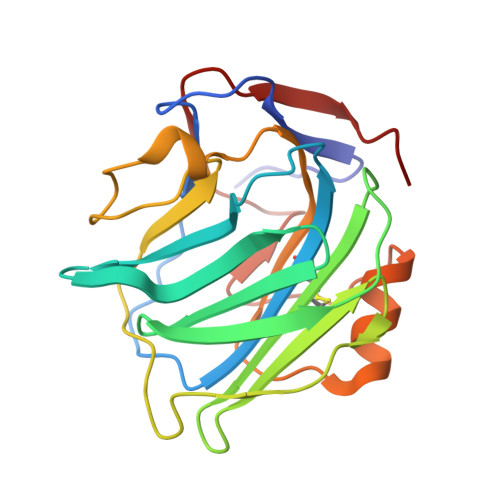Interaction of Serum Amyloid P Component with Hexanoyl Bis(D-Proline) (Cphpc)
Kolstoe, S.E., Jenvey, M.C., Purvis, A., Light, M.E., Thompson, D., Hughes, P., Pepys, M.B., Wood, S.P.(2014) Acta Crystallogr D Biol Crystallogr 70: 2232
- PubMed: 25084341
- DOI: https://doi.org/10.1107/S1399004714013455
- Primary Citation of Related Structures:
4AVS, 4AVT, 4AVV, 4AYU - PubMed Abstract:
Under physiological conditions, the pentameric human plasma protein serum amyloid P component (SAP) binds hexanoyl bis(D-proline) (R-1-{6-[R-2-carboxy-pyrrolidin-1-yl]-6-oxo-hexanoyl}pyrrolidine-2-carboxylic acid; CPHPC) through its D-proline head groups in a calcium-dependent interaction. Cooperative effects in binding lead to a substantial enhancement of affinity. Five molecules of the bivalent ligand cross-link and stabilize pairs of SAP molecules, forming a decameric complex that is rapidly cleared from the circulation by the liver. Here, it is reported that X-ray analysis of the SAP complex with CPHPC and cadmium ions provides higher resolution detail of the interaction than is observed with calcium ions. Conformational isomers of CPHPC observed in solution by HPLC and by X-ray analysis are compared with the protein-bound form. These are discussed in relation to the development of CPHPC to provide SAP depletion for the treatment of amyloidosis and other indications.
Organizational Affiliation:
Laboratory of Protein Crystallography, Wolfson Drug Discovery Unit, Centre for Amyloidosis and Acute Phase Proteins, Division of Medicine (Royal Free Campus), University College London, Rowland Hill Street, London NW3 2PF, England.





















